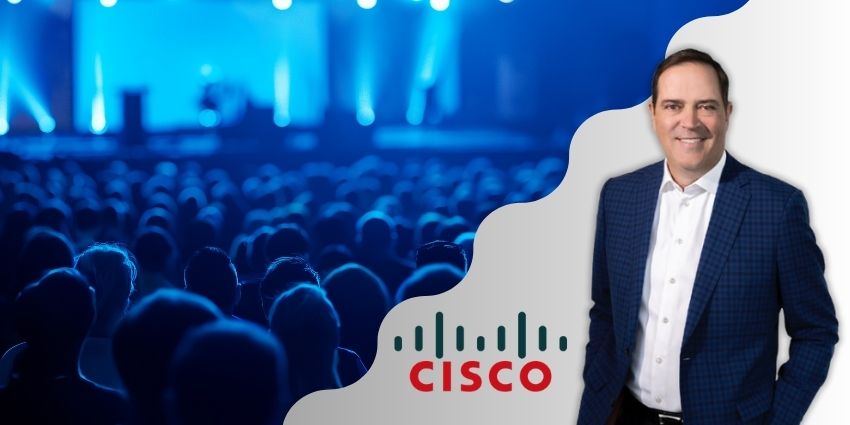Cisco’s AI Summit kicked off last week with a speech from CEO Chuck Robbins and Chief Product Officer (CPO) Jeetu Patel outlining how they view speed in deploying AI and the underpinning infrastructure crucial for enterprises moving forward in this area.
“Our recent survey said only 13% of our enterprise customers feel like they really have a grip on what they’re going to do with AI, but they all know they have to get a grip on it,”
Robbins said.
“They also are balanced with the risk and concern of being left behind by some competitor figuring out faster than they do.”
Not only did it give some big product launches, like the AI Defense solution, but it gave us a clue as to what Cisco sees as the future of its AI drive and how that can play into its products.
Key Ideas in AI Vision
Robbins’ talks on speed and agility came underpinned by what Cisco announced they are broadly focusing on to bring these AI services to its customers.
Having already led the company for nine years as CEO, Robbins is no stranger to the effort it takes to integrate whole new systems on scale.
In 2015, Cisco began its transition to feature greater capabilities in the then-emerging technology of cloud computing.
Yet, just like at that time, users would focus on adoption for adoption’s sake rather than as part of any strategic initiative.
“Customers would tell me, and CIOs would tell me, I’m just signing up for Office 365, so I can tell our CEO we’re in the Cloud, get off my back,” Robbins said. “I think we have similar pressure now, but with a much greater understanding from the C-suite.”
He went on to explain his belief that the service provider community is thinking hard about what their role is relative to the enterprise deployment of AI.
As Patel joined him on the stage for the keynote, the areas of interest took shape in which the CPO summarised would form ‘three specific areas’ for Cisco.
“We are gonna have a great set of services from Cisco that’ll really help organisations get up and running fast,”
Jeetu said.
One was infrastructure, so the computing and networks needed to build new AI applications and use cases.
Another is tooling: the ability for organisations to ensure that they are digitally resilient to stay up and running.
And finally, security. “I think there’s going to be a huge amount of demand for making sure that we have a consistent way of applying safety and security across the entire state for AI,” Patel explained.
With security being one of these focus points, this fed well into Patel’s later announcement of the AI Defense solution.
The new Cisco solution is designed to provide comprehensive protection for both the development and utilisation of AI applications within an organisation, enabling businesses to feel confident to advance their AI initiatives.
It is this safety aspect of AI where we may see some cross over with Cisco and its UCaaS arm Webex.
Where Does Webex Fall Into This?
Webex was an acquisition made by Cisco in 2007 to “become a part of Cisco’s Development Organisation while maintaining its unique business model.”
This highlights the relationship between Cisco and Webex, and therefore, where one goes, the other can be sure to follow.
For instance, at WebexOne 2024, Patel said AI was now considered a “core” aspect of all Cisco products.
This event saw the release of a raft of new AI products, including Webex AI Agent, AI Agent Studio, and Cisco AI Assistant features for Webex Contact Center.
With Patel claiming a core area of interest being in AI safety, this could be an area where Webex gets an upgrade as part of a Cisco-wide security push.
Already, Webex has a number of AI features that are optimised for security.
For instance, Webex has AI guardrails in place to protect against toxic speech and jailbreaking prompts.
This both offers layers of protection against things like AI discrimination, which has become a fineable offence under the EU AI Act, and attackers trying to gain access to sensitive data through prompt injections.
With one of Cisco’s new AI Defense solutions offering more detailed guardrails, including the recommendation of them following the detection of AI systems being used and vulnerability discovery, the idea that Webex may see an update in this area is not unlikely.
Webex themselves admit that these systems have to evolve as AI does, progressing from single modality modes to more adaptive and multi-context aware frameworks.
Thus, additional AI guardrail security, which gives users more control over AI’s expanding applications, could be on the cards.







